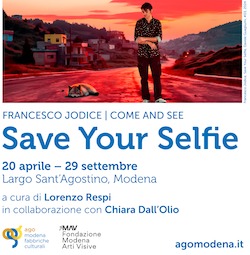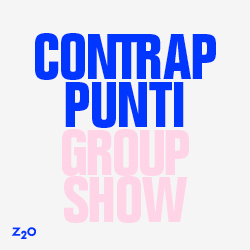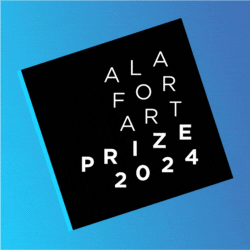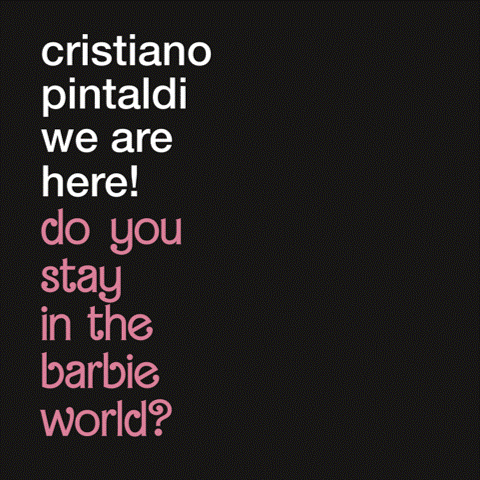[nemus_slider id=”64397″]
—
On February 10, Fondazione Giuliani in Rome inaugurated Fiction is a terrible enemy, solo show by Will Benedict, while just after few days Giò Marconi gallery presented The Social Democrat, second solo exhibition of the artist with the gallery. The latter, open until March 24, presents the most recent pictorial production of the artist, while in Rome one has the possibility to watch, until April 8, an important selection of his video pieces.
WE asked some questions to Will Benedict.
ATP: I’d like to start from the beginning by asking you about the title of the show in the gallery, “The Social Democrat”. Why did you decide for this title?
Will Benedict: Well I wanted to do a show around a photo shoot I’d done of Christiana Figueres who was the UN’s chief diplomat on climate change from 2010 to 2016. In a time of blatant demagoguery I thought it would be a relief to give a noble face to the bureaucratic process. I know that sounds pretty dramatic but that’s also sort of the point. How do you elevate the middleman? The one who sits between Obama and Putin. How do we perceive his hidden power and most importantly how is it related to us. I’m not making an argument for moderation but rather just trying to understand what it might look like. How do we signify looking into the machine? And I think what we see is ourselves. There’s a Norwegian TV show called Occupied set slightly into a future in which Russia has invaded Norway in reaction to the Norwegians cutting off their oil supply to the EU. The US has left NATO and the Norwegians are left to negotiate the occupation on their own. It’s the Norwegian version of Homeland but instead of bi polar jazz intro Claire Danes you have these sober rational discussions about the need for limits on fossil fuels set to a Jason Bourne soundtrack. The show is a few years old now but in the real world Sweden just restarted it’s military conscription program. The way fiction and reality intermingle is spiritual and that seems to be a problem. How do I address the potential of metaphysical depth while keeping my feet on the ground? How do I praise a bureaucrat?
ATP: At Fondazione Giuliani in Rome you’re presenting a selection of your video works, while at Giò Marconi gallery we can see a new series of pictorial works. Beside the fact that they’re both bi-dimensional, I’d like to know if for you there’s any sort of relation between them.
WB: Yes, I think so. My thinking is pretty specific, which can be a trap. But in the practical sense yes, either way, making thingy things or less thingy things I am working out of a collage mentality. Some people call this to “mash up”. But that sort of language is a bit too fancy for me. But I guess I brought it up. Things are made of parts that create wholes and the tension between things holding together and falling apart is important. I’m not making metaphors.
ATP: Looking at this show in the light of “Bonjour Tourist”, your previous one at Giò Marconi in 2012, we can sense that your interest somehow changed from questioning the way we watch TV to how we experience finding ourselves in front of a computer monitor. To what extent do you agree with this first impression? How is your practice and research changed in these last 5 years?
WB: I don’t know. TV, computer monitor, iPad, vitrine, Egyptian sarcophagus. They all seem to share elements that make them more similar than not. They are all very dangerous ideas and highly addictive. Archivists are addicted to the archive. My friend Sara Deraedt doesn’t watch much TV but loves working in archives. I try to tell her it’s the dopamine being released every time she opens an unmarked box. She tells me watching that much Dr. Who is not “research”. But I think I’m working on a lot of the same issues 5 years later. What does the EU look like? Bonjour Tourist was an attempt to embody the Euro in a series of tableaux. It’s ambition, ennui and prejudices. I think what has changed is the times. 5 years ago the EU was a stable entity with a bland bill and Angela Merkel. Now all we have left between us and Marine Le Pen is Angela Merkel.
ATP: How did your collaboration with Wolf Eyes come about? Did they ask you to work on the videos or is it the other way around?
WB: I used their song Black Vomit for a movie called Toilets not Temples in 2014. And then they asked me to make a music video for their new album I AM A PROBLEM through their record label Third Man Records and so I made a couple videos for that album. I’m working on a new video for their new album which is out now on a new record label started by Wolf Eyes called Lower Floor Music. All new. Very low.
ATP: Can you discuss further about the way you approach the creation of a video? What does interest you in this particular medium?
WB: People are educated in it. Which is nice. I think people these days are in general better at reading videos than paintings. So it reaches a different audience. YouTube comment section. And also I need lots of help to make videos. It’s something I can’t do alone. And there are so many talented people out there who are very good at what they do. It’s really a shame not to take advantage of that.
ATP: Regarding the recent election of Donald Trump, “Fiction is a Terrible Enemy” is something we may find written on walls in a near future. I’d like to know about the process that led the selection of the videos for the show at Fondazione Giuliani in the light of this recent event.
WB: I don’t know. The videos were made before Trump was elected. The Stop and Frisk poster is from 2013. The issue of how we perceive reality is at stake with or without Trump but of course things are intensified by his mental health issues.

Interview with Will Benedict | Fiction is a terrible enemy
La Fondazione Giuliani di Roma il 10 Febbraio ha inaugurato Fiction is a terrible enemy, mostra personale di Will Benedict, mentre a pochi giorni di distanza la galleria Giò Marconi ha presentato The Social Democrat, seconda mostra personale dell’artista con la galleria. Quest’ultima, visitabile fino al 24 Marzo, presenta la più recente produzione pittorica dell’artista, mentre a Roma si potrà vedere, fino all’8 Aprile, un importante nucleo di sue opere video.
Matteo Mottin ha posto alcune domande all’artista.
ATP: Vorrei cominciare dall’inizio chiedendoti del titolo della mostra in galleria, “The Social Democrat”. Perché hai scelto questo titolo?
Will Benedict: Beh, volevo fare una mostra partendo da una foto che ho scattato a Christiana Figueres, la diplomatica a capo della commissione ONU sul cambiamento climatico dal 2010 al 2016. In un periodo di demagogia sfacciata ho pensato che sarebbe stato un sollievo dare un volto nobile al processo burocratico. Sò che suona piuttosto drammatico, ma questo è veramente il punto. Come si può elevare l’uomo medio? Quello che siede tra Obama e Putin. Come percepiamo il suo potere e, ancor più importante, come questo è legato a noi. Non sto cercando di sostenere la teoria del moderatismo, piuttosto cerco di capire che aspetto possa avere. Cosa significa guardare all’interno del sistema? Quello che vedremo sarà noi stessi, penso. Esiste uno show di una tv norvegese chiamato “Occupata”, ambientato in un futuro prossimo in cui la Russia ha invaso la Norvegia in conseguenza della decisione norvegese di tagliare la loro fornitura di petrolio all’Europa. Gli USA sono usciti dalla NATO e i norvegesi sono lasciati da soli a negoziare con i loro occupanti. E’ la versione norvegese di Homeland, ma invece di un’introduzione musicale jazz bipolare di Clare Danes ci sono sobrie discussioni sull’esigenza di limitare l’uso dei combustibili fossili con in sottofondo la colonna sonora della serie di Jason Bourne. Il programma ormai è vecchio di qualche anno ma nel mondo reale la Svezia ha appena ripreso il programma di coscrizione militare. Il modo in cui fiction e realtà si intersecano è spirituale e questo sembra essere un problema. Come posso affrontare il potenziale della profondità metafisica pur mantenendo i piedi per terra? Come si loda un burocrate?
ATP: Alla Fondazione Giuliani di Roma presenti una selezione di lavori video, mentre da Giò Marconi troviamo una serie di nuovi lavori pittorici. A parte il fatto che tutti sono bidimensionali, vorrei sapere se tra loro c’è una qualche relazione.
WB: Direi proprio di si. Il mio pensiero è piuttosto specifico, il che può essere una sorta di trappola. Ma a livello pratico, sì, in ogni caso, sia che io realizzi oggetti più materici o meno, lavoro sempre attraverso il mio modo di pensare “a collage”. Alcuni lo chiamano “mash up”. Ma questo tipo di linguaggio è troppo modaiolo per me. Penso però di averlo un po’ interiorizzato. Le cose sono fatte di parti che creano un tutto e la tensione tra le cose che riescono a stare insieme e quelle che si dividono è importante. Qui non sto facendo metafore.
ATP: Guardando questa mostra alla luce di “Bonjour Tourist”, la tua mostra precedente da Giò Marconi nel 2012, si percepisce che il tuo interesse è in qualche modo cambiato dall’investigazione del modo in guardiamo la tv al modo in cui facciamo esperienza del trovarci di fronte al monitor di un computer. Fino a che punto ti trovi d’accordo con questa mia prima impressione? Come sono cambiate la tua pratica e la tua ricerca in questi 5 anni?
WB: Non saprei. Tv, computer, iPad, vetrine, sarcofagi egizi. Sembrano tutti condividere degli elementi che li rendono più simili che differenti. Sono tutti idee molto pericolose e che provocano un’alta dipendenza. Gli archivisti sono dipendenti dagli archivi. La mia amica Sara Deraedt non guarda molta tv ma adora lavorare negli archivi. Io cerco di spiegarle che è la dopamina rilasciata ogni volta che apre una scatola non classificata. Lei mi risponde che guardare così tanto Dr. Who non è “ricerca”. Ma credo di stare lavorando su molti degli stessi temi dopo 5 anni. Come si presenta l’Unione Europea? Bonjour Tourist era un tentativo di impersonare l’euro in una serie di tableaux. E’ ambizione, noia e pregiudizi. Credo che quello che è cambiato siano i tempi. 5 anni fa l’Unione era un’entità stabile con una moneta scialba e Angela Merkel. Ora tutto quello che abbiamo lasciato tra noi e Marine Le Pen è Angela Merkel.
ATP: Come è nata la tua collaborazione con i Wolf Eyes? Sono stati loro a chiederti di lavorare ai video o li hai contatti tu?
WB: Ho usato una loro canzone, “Black Vomit”, per un film intitolato “Toilets not Temples” nel 2014. Poi mi hanno chiesto di fare un video musicale per il loro nuovo album “I AM A PROBLEM” con la loro etichetta discografica Third Man Records e così ho realizzato un paio di video per l’album. Sto lavorando a un nuovo video per il nuovo album che è in uscita ora, prodotto dalla loro nuova etichetta Lower Floor Music. Tutto nuovo. Molto basso.
ATP: Puoi parlarmi meglio del modo in cui approcci la creazione di un nuovo video? Cosa ti interessa di questo medium in particolare?
WB: Le persone sono istruite su questo. E questa cosa è bella. Penso che le persone di questi tempi siano in generale più abili nella lettura dei video che dei dipinti. Quindi si raggiunge un pubblico differente, YouTube ha una sezione di commenti. E anche io ho bisogno di molto aiuto per creare video. E’ qualcosa che non posso fare da solo. E ci sono così tante persone di talento in giro che sono bravissime in quello che fanno. E’ un vero peccato non sfruttare queste potenzialità.
ATP: Riguardo alla recente elezione di Donald Trump, “Fiction is a Terrible Enemy” è qualcosa che potremmo trovare scritto sui muri nel prossimo futuro. Vorrei saperne di più sul processo che ha portato alla selezione dei video in mostra alla Fondazione Giuliani alla luce di questo recente evento.
WB: Non so. I video sono stati realizzati prima che Trump fosse eletto. Il poster “Stop and Frisk” è del 2013. Il tema di come percepiamo la realtà è attuale con o senza Trump, ma certamente le cose sono intensificate dai suoi problemi mentali.














